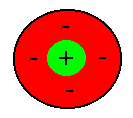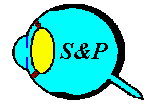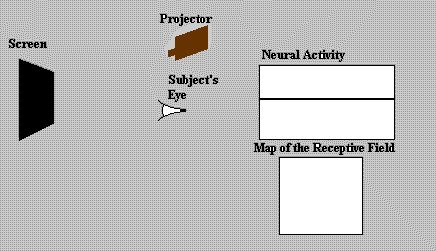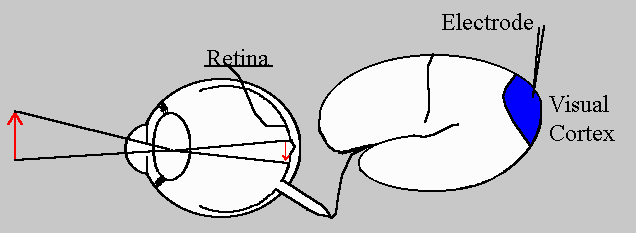

Receptive Fields Tutorial


Topics covered within this tutorial:
A very standard way to start any discussion of a new and difficult term is to give the definition. Levine and Shefner (1991) define a receptive field as an "area in which stimulation leads to response of a particular sensory neuron" (p. 671). This definition uses very standard terms but taken out of context as definitions usually are, it does not seem very helpful. So, to give the term receptive field some context it is important to know that this rather odd term was developed as a way of understanding some experimental finding.
An experiment that determines a receptive area requires 4 things:
This is an oversimplication of the technical challenges that must be faced in making an adequate recrode of the activity from a single-cell but these elements are sufficient for understanding what a receptive field is.
 Below is an animation that will illustrate an early
experiment in the determination of a receptive field.
Below is an animation that will illustrate an early
experiment in the determination of a receptive field.
This animation illustrates the initial step of a typical experiment mapping the
receptive field of a single cell in the visual system. This cell could be at any of many
different locations in the brain that process visual information. For the purposes of this
illustration let us say that the cell is a retinal ganglion cell which were first mapped
by Kuffler (1953). Basically, the light is
shined of various locations of the screen and the activity of the cell is recorded in
response to that stimulus location.
Continuing this procedure, will develop of map of all the regions of the sensory surface that causes a change in the firing rate of the cell. What was obvious from these first studies was that there was not a one-to-one correspondence between the region stimulated and the cell that fired. A relatively large area of the sensory surface could affect that firing rate of any one cell. In addition, stimulation of any one region would affect the firing rate of several cells. This animation follows procedures similar to those actually used by Kuffler (1953) to determine the receptive fields of retinal ganglion cells. What is not indicated in this animation is the microelectrode actually penetrating a retinal ganglion cell.
Figure 1, below, shows a slightly different setup for mapping a receptive field. In this case the microelectrode is located in a cell in the visual cortex. In Figure 1, notice the location of the:
After studying Figure 1, either click on the area of the diagram where you think you think will find the receptive field.

Figure 1. An illustration of how an experiment mapping the receptive field of a
cortical cell might proceed.
Copyright, 1994, John H. Krantz, all rights reserved. Last update, May 1999.